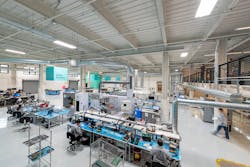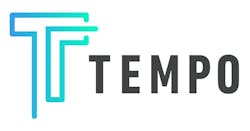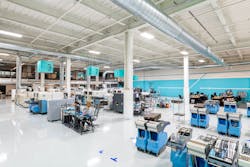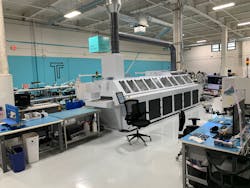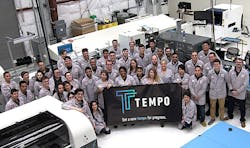The need for PCB assembly speed: Tempo Automation helping bring products to market faster than ever
The concept-to-market cycle of a product in the electronics space is often quite lengthy. Even with the rapid rate of innovation and technological advancements we’ve seen over the past decade, that cycle can sometimes take several years from the design stage until a physical product can start being sold.
San Francisco-based startup Tempo Automation is doing its part to shorten that cycle, putting to use a new smart factory to take PCB assembly from a timeframe that traditionally takes weeks down to days.
Background
In 2016, the company received $8 million in its Series A funding round to upgrade its facility, and two years later it closed on $20 million of Series B funding to build out a new smart factory at the company’s current location in San Francisco’s Mission District.
The 42,000-square-foot facility opened this past August, and during DesignCon—held in late January in nearby Santa Clara, CA—I attended a media event the company hosted so I could see it myself.
Running on three production lines, Tempo Automation is able to take PCB design files it receives from customers and have finished boards ready to ship in as little as three days. And while the end product is all on the hardware side, Tempo Automation is a software company, and its proprietary software is what enables such fast turnaround for its diverse clientele.
“Tempo Automation’s goal is to transform the PCB assembly industry with a software-centric approach,” company CEO Jeff McAlvay said. “This software helps us to become the fastest, most reliable PCBA prototyping partner to electrical engineers for their high-complexity designs.”
Tempo increased sales by more than 500% in 2017 alone, and its funding enabled it to find a bigger home when capacity was maxed out. It also allowed the company to triple the size of its software team in 2018—the company went from 60 employees in early 2018 to more than 100 by the end of the year. Tempo is continuing to expand into key vertical markets, as well as offer expanded software products.
“Tempo has seen tremendous growth over the last year as more customers in a range of industries see how we can help them get great products to market faster,” McAlvay said. Our automation software enables our factory to produce complex printed circuit board assemblies with unmatched quality and speed. By delivering improved speed, reliability, and transparency to our customers, Tempo empowers innovators to bring their designs to market faster—a boon for competitive industries like medtech, aerospace, industrial automation, consumer electronics, and automotive.”
Traditionally, when a manufacturer is ready to order a large shipment of circuit boards, they look to receive a small batch of prototypes to make sure everything works as intended. Large contractors that provide this are often set up for very large orders and it can take a long time to set up something new. But, even a smaller prototype provider can be slow, and vary in quality. Overall, it’s not a quick process for those who need the prototypes.
How does it all work?
Tempo’s Automatic Pick and Place Machine Programming software analyzes the CAD files and BOM, and then programs each production line machine with the custom build plan. Clients are able to pick specific distributors they want to source parts from, and Tempo’s system will alert them of any inventory issues in real-time. Every employee on the factory floor operates a mobile device to access Tempo’s digital traveler, which is connected to the overall platform’s digital thread. This guides operators through the production process and is updated in real-time, based on design and process updates.
“In a traditional manufacturing process, machines on the floor are all isolated islands of technology,” said Shashank Samala, Tempo’s vice president of product. “Tempo Automation, on the other hand, has created a smart factory and a secure AWS GovCloud infrastructure that networks all of these components together in a bidirectional feedback loop, connecting the machines and people on the factory floor with customers via a single digital thread to ensure quality, delivery, unparalleled speed, and accuracy.”
“There could be up to 20 robots, 400 unique parts, and 25 people working on the factory floor to produce one order start to finish in a matter of hours,” Samala added. “For every unique order, Tempo’s process employs IIoT to automatically configure, operate, and monitor its prototyping and low-volume printed circuit board assembly factory in San Francisco.”
Tempo currently can build orders up to 250 boards and is able to prepare them in a day or two. At the time of my visit, the company had 67 main FAB supplier partners—and many of them are Tier 1 companies. Tempo states that it serves four of the world’s 10 largest medical device companies, two of the leading 10 aerospace, aviation, and defense firms, and two of the top 10 satellite manufacturers. Tempo even assembled PCBs that are on the Mars 2020 Rover, scheduled to land on the Red Planet in February 2021.
In 2018, Tempo introduced the Tempo Order Tracker, which allows customers to see the step-by-step status of their order—displayed in the same fashion as Domino’s Pizza Tracker or an order on 1-800-Contacts’ website.
Another valuable service Tempo is able to provide its clients is production forensics. Customers can purchase production forensics reports, which they can then take to a high-volume manufacturer. This allows engineers to receive a defect report, which they may have never had before. Essentially an X-Ray report of the assembled PCB, this analysis can help the engineer determine why something failed, why it will fail testing, or what will alternatively yield better results.
Certainly, not every product that vendors utilize Tempo to make a PCB for prototyping is a winner. For example, during our factory tour, led by Tempo vice president of manufacturing Ryan Paul, he showed us the PCB Tempo made that was used for a prototype of a smart walking cane, designed to monitor the cane’s position and location and send alerts in case of a fall. The cane never made it into production. Still, through partnering with Tempo, that client was able to shorten the prototyping cycle and get answers quicker than it otherwise might have.
Looking ahead
Tempo Automation appears well-positioned for continued success. According to a new forecast from QYResearch, the global market for multilayer printed circuit boards was valued at $23.0 billion in 2018 and will reach $26.7 billion by the end of 2025—growing at a CAGR of 1.9%.[1]
On March 25, Tempo announced it had signed a contract agreement with Lockheed Martin—arguably Tempo's most high-profile client yet.
Tempo’s success is akin to how 3D printing has enabled rapid, small-batch prototyping of everything from fasteners to small houses. Time will tell if its production model will be replicated by others in the electronics space.
Sources
1. “Multilayer Printed Circuit Board Market Insights and Forecast 2019-2025”. QYResearch, February 2019.
About the Author


